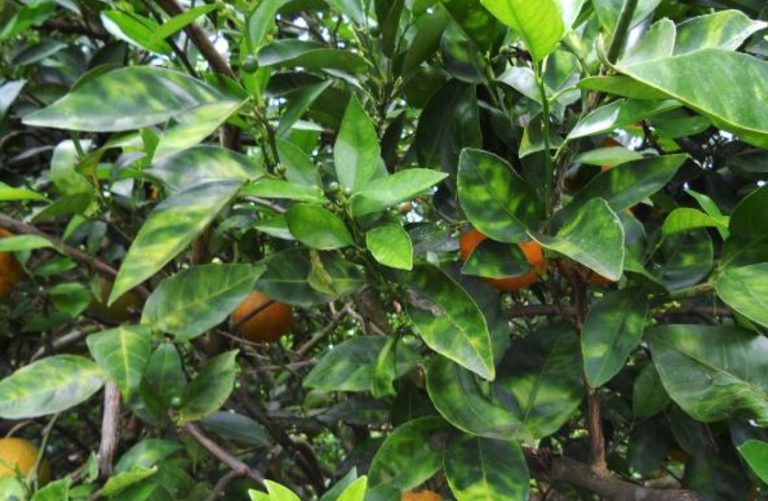
By Clint Thompson
It’s not a question of if citrus greening disease will be an issue for North Florida and South Georgia citrus producers but when will it be.
Fred Gmitter, a University of Florida citrus breeder, believes the disease’s impact in both areas is inevitable. He shared his assessment during Thursday’s Cold Tolerant Citrus Production Workshop in Perry, Florida.
“Everywhere I’ve traveled in the world where the (Asian citrus) psyllid has been, I’ve seen greening,” Gmitter said. “One of the common psychological responses that people have is this denial thing. I’ve been in places, China for example, where they told me we don’t have greening. I’m looking at 25% of the trees with greening. They say it’s something else, but sure enough, three years, four years, 10 years later, the industry in that area is down the tubes.
“I don’t think there’s anything particularly special about North Florida and South Georgia that’s going to prevent this from being a problem here. I hope I’m wrong, I would love to be wrong on this.”

Gmitter could not give a timeframe on when the disease would make its way northward. It will depend on how proactive the producers will be.
“The growers in Central and South Florida had their head in the sand. They had the psyllid for seven years, and when we first found the psyllid, we said, okay, it moves greening, but we don’t have greening. So, it’s not a problem,” Gmitter said. “Then when we found the first tree and looked and actually some of the groves were already 25% symptomatic. Growers in Central Florida were saying it’s a problem in South Florida. It’s different down there, it’s not going to be a problem here in Central Florida. It’s slapped silly with greening.
“Growers here are saying that’s a South Florida, Central Florida problem. I think that’s faulty thinking. I think it’s inevitable.”
Greening Disease Description
According to the UF/IFAS, citrus greening or Huanglongbing (HLB), is a disease affecting citrus production throughout the world. The Asian citrus psyllid, which is found throughout Florida, transmits the bacterium Candidatus Liberibacter asiaticus. It causes HLB.
Gmitter said growers can take steps to delay the disease’s inevitability.
“If you look for example at what’s happened in California, it’s been in the state for a long time. But the main area has been spared up until this point in time. They’ve been extremely proactive in regulating and policing what’s going on. They’ve so far kept it out of the Central Valley,” Gmitter said.
“(Growers need to) watch for it, and when you find it, stamp it out if you can. That’s not a long-term strategy, though, I don’t think. Longer term, start thinking about some of the evidence we have that certain rootstocks make the trees more tolerant of the disease. If you’re going to have to live with the disease, start thinking about trying some of those rootstocks now to see how they work in South Georgia and North Florida soils.”









